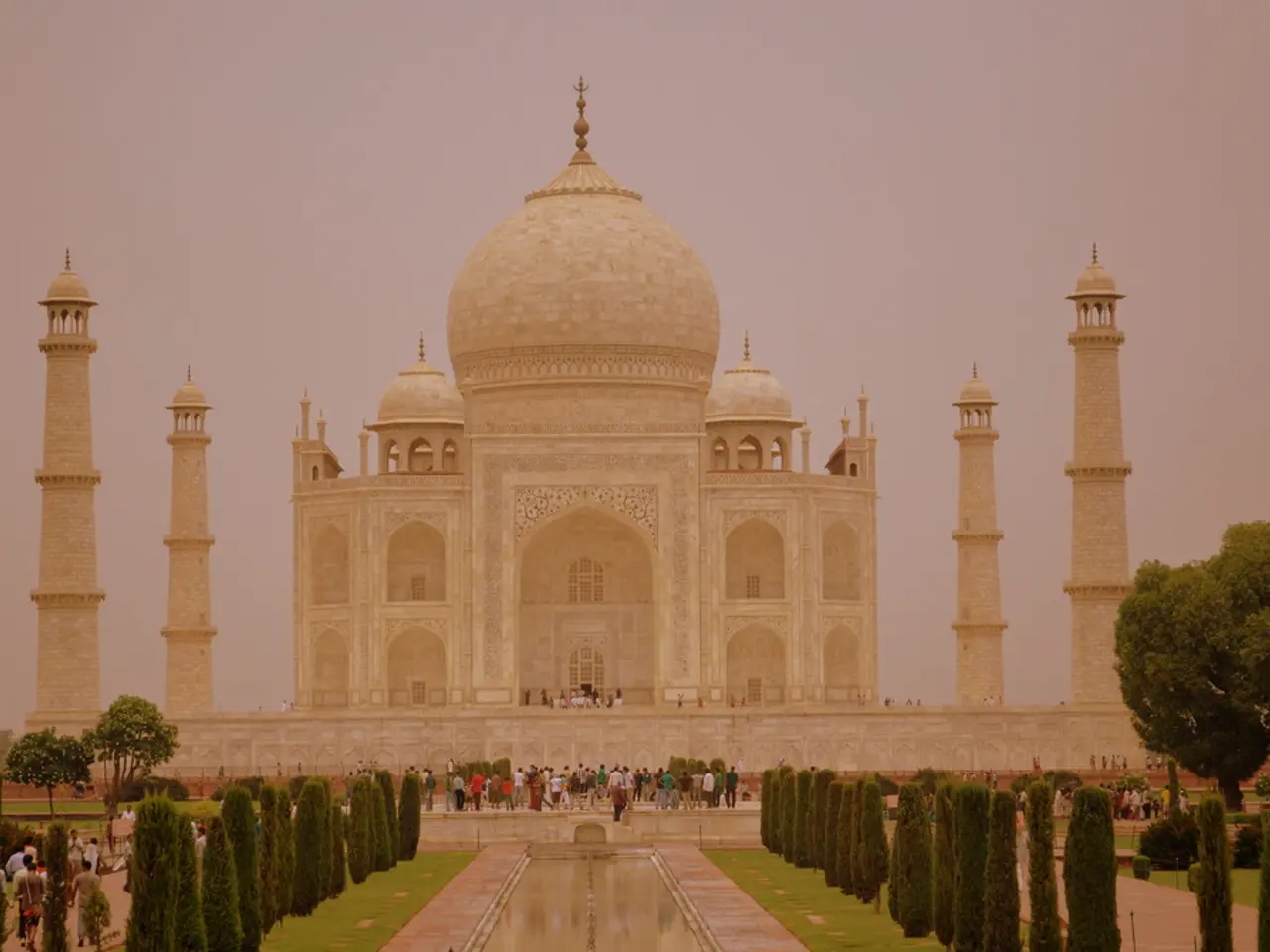Daily Rituals and Festivities: Exploring a Single Day in Varanasi, India's Most Sacred City
It's the wee hours of the morning, and my blaring alarm shatters the silence. I've been dreaming about this moment for years, and there I am - smack dab in the middle of it. The sacred city of Varanasi, India.
I can almost hear the whispers of all those pilgrims who have ventured to these holy banks, seeking solace in the revered waters of the Ganges. The river, a beacon of life and purity, attracts millions of devotees hoping to wash away their sins with a single dip. For many, myself included, being in Varanasi is a once-in-a-lifetime opportunity.
Grabbing my clothes, I sprint out into the chilly air, hustling toward the riverbank. This eerie hour lends a quiet, almost peaceful vibe to the usually bustling streets. Small groups huddle around the open stalls, sipping on steaming chai, waiting for the first rays of sunlight.
Reaching the Assi Ghat, I'm greeted by a boat bobbing lazily on the water. I can't contain my excitement as I climb aboard and we set sail upstream. A nearby crowd is gathered, chanting as flames flicker and dance before them. This is the pre-sunrise Aarti, a Hindu ritual dedicated to the Ganges that, in this case, is called the Subah e Banaras.
I've been to India a handful of times, and Varanasi had always been the dreamland I yearned to explore. As the boat glides past the 80-odd Ghats, I watch the city come to life. Young boys playing cricket on the Ghats, yogis contorting their bodies into impossible poses, and women bathing in the sacred waters line the banks.
But the Ghats hold a darker side, too. These are the steps upon which countless bodies have been cremated - ashes spread into the sacred waters so souls may ascend directly to heaven. It's a haunting spectacle, one that leaves me feeling like an intruder peering into a world both alien and profoundly intimate.
Still, I find myself captivated as I sail past the lifeless forms, my gaze lingering on the craggy faces of those who've come to pay their respects. My boat captain, a grizzled veteran of this strange ritual, seems equally transfixed, although he's likely witnessed it all countless times before.
As the sun finally breaks free from the horizon, the riverbank bursts into activity. Rusty red palaces and towering temples juxtapose with the bare feet of wealthy men carrying wood to the cremation sites. In the distance, I can hear the clashing sounds of mud wrestlers engrossed in a traditional sport.
Food beckons me as the smell of spices wafts through the air. Following my nose, I stumble upon an authentic street stall, where I try a local morning staple - sweet jalebis - and watch as the frenetic cooks work miracles with their hands. A stray goat, sporting a hand-knit jumper, guides me deeper into the winding alleys.
In one alley, I witness handloom weavers creating the intricate designs for which Benarasi Silk Sarees are renowned. In another, I watch as women expertly dye fabrics in vibrant hues. This labyrinthine city is a symphony of sights, sounds, and scents, each twist and turn revealing a new tale to be told.
As the afternoon sun begins to heat up, I head back to the river for the grand finale: the evening Ganga Aarti at the famed Dashashwamedh Ghat. Row upon row of boats gather, waiting for the magical moment when fire and flame will dance upon the water.
Hordes of people converge on the Ghat, and I'm swept up in a sea of bodies. This is no performance - it's the culmination of a painstaking pilgrimage that has brought millions of devotees to these banks over the centuries. In the twinkling glow of countless floating candles, I feel as if I'm catching a glimpse of the India I'd always imagined as a child.
But Varanasi isn't a fairy tale - it's a living, breathing entity, full of contradictions and complexities. The city, like the people and the River Ganges themselves, is a masterpiece of chaos and beauty, pain and delight, darkness and light.
Plan Your Visit
- Budget-friendly Stay: Try the Ganga Fuji Hostel, just a stone's throw from the Ghats. Rooms go for around £10 per night for a private, or £4 for a dorm.
- Comfortable Stay: The Ramada, a five-star hotel featuring pool and spacious rooms, is located about twenty minutes from the city.
- Unique Experience: For something more luxurious closer to Varanasi, the Brij Rama Palace, a stunning converted palace, offers a slice of history and luxury.
- Getting There: The best bet is flying into Lal Bahadur Shastri airport, which connects to multiple domestic destinations as well as some international ones. It takes around 40 minutes to reach the city center from the airport.
- Next Destination: Head to Ayodha, Prayagaja, or Agra to explore more of the Uttar Pradesh region, or pay a visit to the iconic Taj Mahal and embark on the famous India Golden Triangle tour of Agra, Jaipur, and Delhi.
*Updated in 2024
Additional Notes:
- The Aarti ceremony in Varanasi is a sacred ritual that honors the River Ganges, which is believed to wash away sins and bring peace.
- The ceremony symbolizes the dispelling of darkness and negativity through the offering of light (fire), chanting of mantras, and the use of symbolic elements such as fire (Agni), incense (Dhupa), flowers (Pushpa), water (Jal), and sound (Shabda).
- The Aarti is a communal experience that involves priests performing highly choreographed rituals with brass lamps, conch shells, incense, and devotees participating by singing, clapping, and offering floating lamps.
- The venue for the Aarti, such as Dashashwamedh Ghat, is steeped in Hindu mythology and history, adding to the ritual's significance.
Embracing cultural-travel, I envision my days in Varanasi revolving around the enchanting river Ganges and its associated rituals, such as the Subah e Banaras and the evening Ganga Aarti at Dashashwamedh Ghat. I am also eager to explore the city's lifestyle, interacting with various communities and experiences, like observing handloom weavers and tasting authentic street food.
Post-travel, I plan to share my discoveries by sketching the vibrant scenes of Varanasi, using the intricate designs of Benarasi Silk Sarees as a source of inspiration for my artwork. I anticipate that this journey will not only enrich my understanding of Indian culture and its rich tapestry but also offer a fresh perspective on the interplay between travel, personal growth, and artistic expression.





